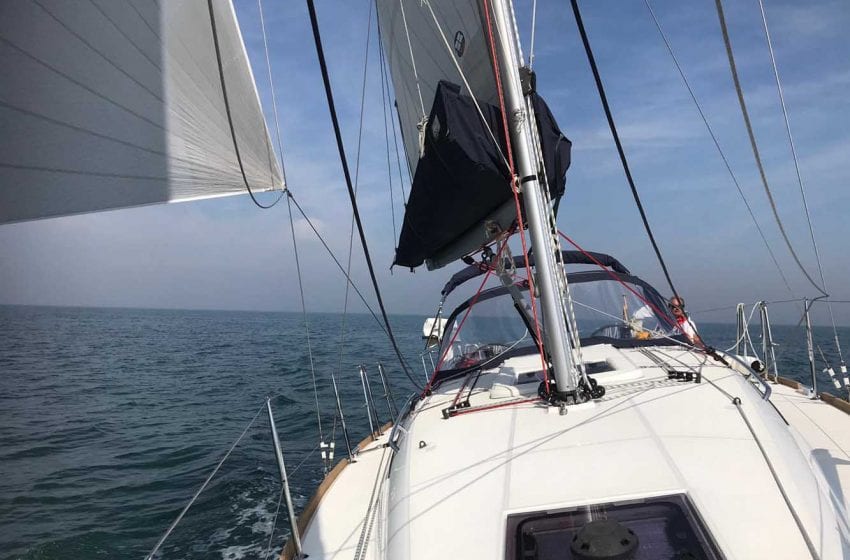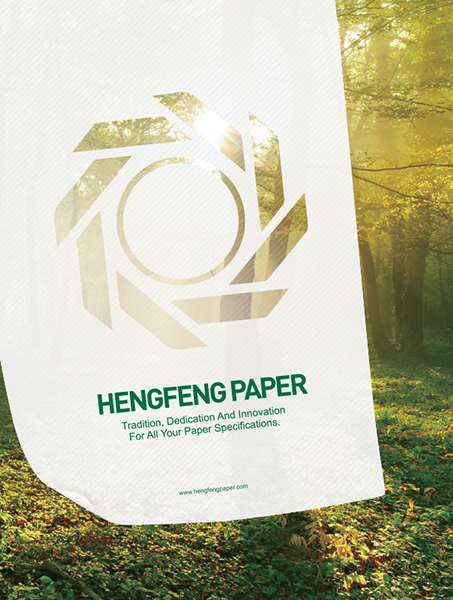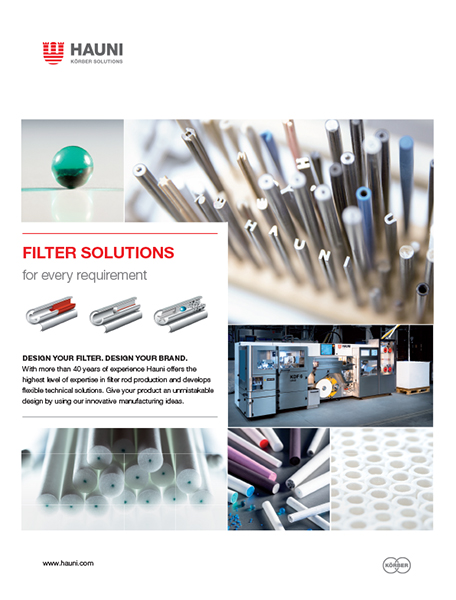Knowing The Ropes
- Also in TR People Print Edition
- June 1, 2020
- 0
- 13 minutes read

Harnessing decades of experience in process instrumentation, Ian Benson sets out on his own.
By George Gay

Shortly after starting a video call with Ian Benson at the beginning of April, I noticed that behind him, on the wall of his office, was a sign that read: “Gone sailing.” If only, he must have been thinking. You don’t have to speak with Benson for long to realize that he is not a man who takes easily to sitting around, and our call took place about a week into the U.K.’s coronavirus lockdown.
His frustration, however, concerned not only his inability to access his boat, which, after having been cleaned over winter, had been returned to the water just three weeks earlier, but the fact that the lockdown was making it difficult to make headway in respect of two consultancy projects—one in progress and another recently negotiated—that he was undertaking as part of the company he set up in October last year, Ian Benson Consultative Solutions (IBCS).
Benson, who has been involved since the 1980s in the design, development and implementation of online and QA/QC process instrumentation for manufacturing industries, such as those producing tobacco, flexible packaging and food, last year went out on his own offering a number of services, including the evaluation and optimization of online process measurements in factories. And it is noteworthy that one of the points he made in a letter sent out on setting up IBCS was that he was internationally mobile—able to visit manufacturing facilities wherever they might be.
For many years, Benson’s life has revolved around travel, whether on water for relaxation or by air for work. Indeed, he mentioned a number of times during our call that he hugely enjoyed traveling, though what he really meant, I think, is that in the case of work travel, he enjoys arriving wherever he is bound for and, especially, meeting people, interacting with them and building relationships that straddle the workplace and restaurant.
Interestingly, however, his work life could have been very different from how it panned out. He told me how, in 1978, after having obtained his chemistry degree and PhD (focusing on organometallic catalytic systems and spectroscopy) at Bristol University, U.K., he had “dreams” of harnessing all the “wonderful skills” he had learned, and so started looking for industry-relevant roles to exploit his knowledge. However, he said, it was not to be because such forward-looking opportunities were scarce if not nonexistent. Clearly, at that stage he could easily have slipped into academia had it not been for the fact that the area of research he was engaged in ran out of road. Looked at from today’s perspective, it’s hard to imagine that, at a time when the world was becoming paranoid about running out of oil, there would not have been enough interest in synthesizing organic oil, but that was apparently the case.
So, Benson, in his own words, “moved onto reality,” taking a job in the U.K. with the photographic film company, Ilford, where he initially worked as a research scientist but where he gradually moved to a technical services role, which involved product management—designing products for customers. This move, he said, confirmed to him that he didn’t want to pursue an academic career—that he preferred interacting with customers and providing things that companies needed. Benson laughed somewhat guiltily as he added that this was probably the start of his moving to the “dark side”—sales and marketing.
It was a gradual move. After three years, he left Ilford and, in 1981, joined Infrared Engineering, then a private company of about 30 people, as an applications engineer. In 1992, Infrared was bought by, and became an operating company of, the Fairey Group (later renamed Spectris after Fairey bought Spectris), by which time Benson was working in sales and, shortly after the acquisition, was made a legal director—sales—of Infrared. After taking a number of marketing courses, his role evolved to embrace both sales and marketing; but, eventually, that role became too burdensome as the business grew and, especially, after Infrared acquired NDC Systems, a U.S. company specializing in instrumentation systems for the flexible packaging market, and became NDC Infrared Engineering. At that point, around 1997–1998, he had to choose between sales and marketing, and, having developed an “increasingly passionate” interest in marketing and having worked in sales for more than 10 years, he chose the latter.
As a newly appointed applications engineer at Infrared in 1981, Benson began working with customers to design measurements they needed to make as part of their processes and that could be made using Infrared’s instruments, such as moisture or nicotine in tobacco. He quickly became the manager of what was then a small department and started to travel the world, relishing his immersion in different cultures. “It was a really interesting role and one that I would recommend to anyone who isn’t certain whether they want to get into the sales and marketing arena, because it is a gentle introduction,” he said.
“Interesting” hardly describes things adequately. Benson smiled broadly as he recalled many years ago shivering in a suit and tie as he made a sales pitch during an Asian winter to tobacco company representatives rugged up in a cold, unheated venue, and watched them gradually fall asleep. In fact, a lot of the stories he tells have him as the fall guy. Benson told me also that he was very hands-on and liked to get on with things, though at times he should have been more patient. Once in a GLT plant in South America he quickly climbed a ladder, keen to see where gauges were going to be positioned above a conveyor. But where he climbed to was also an exit port for a strip-tobacco drying station, and he was hit by a nicotine rush that almost had him falling down the ladder. Seeing the state he was in, his hosts, hardly able to contain their laughter, told him they would have warned him had he waited five seconds.

But such close engagements with tobacco processing and the people involved in it were key to Benson’s success, and he underpinned his company’s position in established markets and led it into new regions and countries. On one trip in the mid-1980s, he managed to hitch a ride on the private helicopter taking the president of Gudang Garam from Surabaya to the company’s headquarters in Kediri, Indonesia, and later returned home with an order worth £250,000 ($311,174), a huge amount of money for a relatively small company in those days. Importantly, too, Benson was one of the tobacco industry pioneers who broke into the China market as that country opened to the West. China became NDC Infrared’s biggest tobacco-sector market and was still the biggest when he left in August 2019.
Later, it helped that, with NDC on board, Benson was able to make sales pitches that underlined the huge range of measurements that his company could offer. He told me that he could take a cigarette pack and tell potential customers that NDC Infrared could measure the thickness of the film that the tear-strip was made from, the adhesive with which it was attached and the thickness of the overwrap to which the tear-strip was stuck. Beyond the wrap, the company’s instruments could measure the moisture in the pack’s board and in the metalized film, and the coating applied to the aluminum foil to stop it discoloring. Finally, in the case of the cigarette itself, measurements could be made of the filter paper, the tow and, hugely importantly, the moisture, nicotine and sugar in the tobacco.
With such a pitch, it was not surprising that NDC Infrared, and Benson in particular, built up close relationships with companies around the world, and he spoke with special fondness of bygone trips to the multiple factories operated by the then Spanish tobacco monopoly, Tabacalera, where he worked closely over long hours checking the performances of his company’s instruments with the monopoly’s engineers and technicians; and where, at lunch and dinner, he joined them again to savor the country’s fine foods and wines.
Driving forward
But I have to be careful here because I shouldn’t give the impression that Benson is somehow stuck in the past, reminiscing about the good old days, because he isn’t. His naturally restless spirit tends to drive him forward, something that is illustrated in his letter to prospective clients where he points out that he can help in respect of old or new processes, existing or evolving technology, and with new and developing needs, even those where a solution has not yet been identified.
But, having said that, there is one positive aspect of the tobacco instrumentation business that he mentioned as having been lost in more recent times, and it is illustrated above in the anecdote about Spain. In the past, he said, major tobacco manufacturers employed a lot of highly skilled engineers and technicians with whom instrumentation company people could work in situ in testing and improving established devices and developing new ones, but those engineers and technicians had disappeared, victims of cost reductions.
Of course, Benson well understands the reasons why those cost reductions had to be made. After all, he has spent just about all his working life serving an industry that has been under ever-increasing pressure from anti-tobacco activists and regulators. And this raises an interesting point. Despite all of the consolidation the industry has undergone and despite all of the pressure that has seen smoking decrease sharply in at least Western markets, Benson never mentioned any major downturns having occurred in the demand for tobacco factory instruments, which logically should have been indirectly and negatively affected by these developments. And the reason for this is that there haven’t been any significant downturns. What has been lost on the swings has been gained on the roundabouts.
As tobacco products have been changed in response to regulations or the need for cost savings, the need for measuring new or modified products and processes in traditional or new ways has increased, so the demand for the instruments that can make those measurements has increased also. Over the years, various “new” products have been added to blends, including stem, waste in the form of reconstituted tobacco and expanded tobacco of different types. And as Benson says, those changing processes have had to be controlled through new or modified measurements that have required a continuous development cycle in so far as instrumentation is concerned.
And this demand for new measurements and instruments hasn’t been driven only by outside pressure. The increasing speed of cigarette manufacture and increasingly strict industry-set standards have required that whereas primary factories might have used one gauge in the past, now, some of them will be equipped with 40. And then there is the development of heat-not-burn products, the components of which, most of them highly differentiated, have to be measured with the utmost precision.
There is clearly much still to do—well, once the lockdown is lifted and there’s been just a little time to go sailing.



